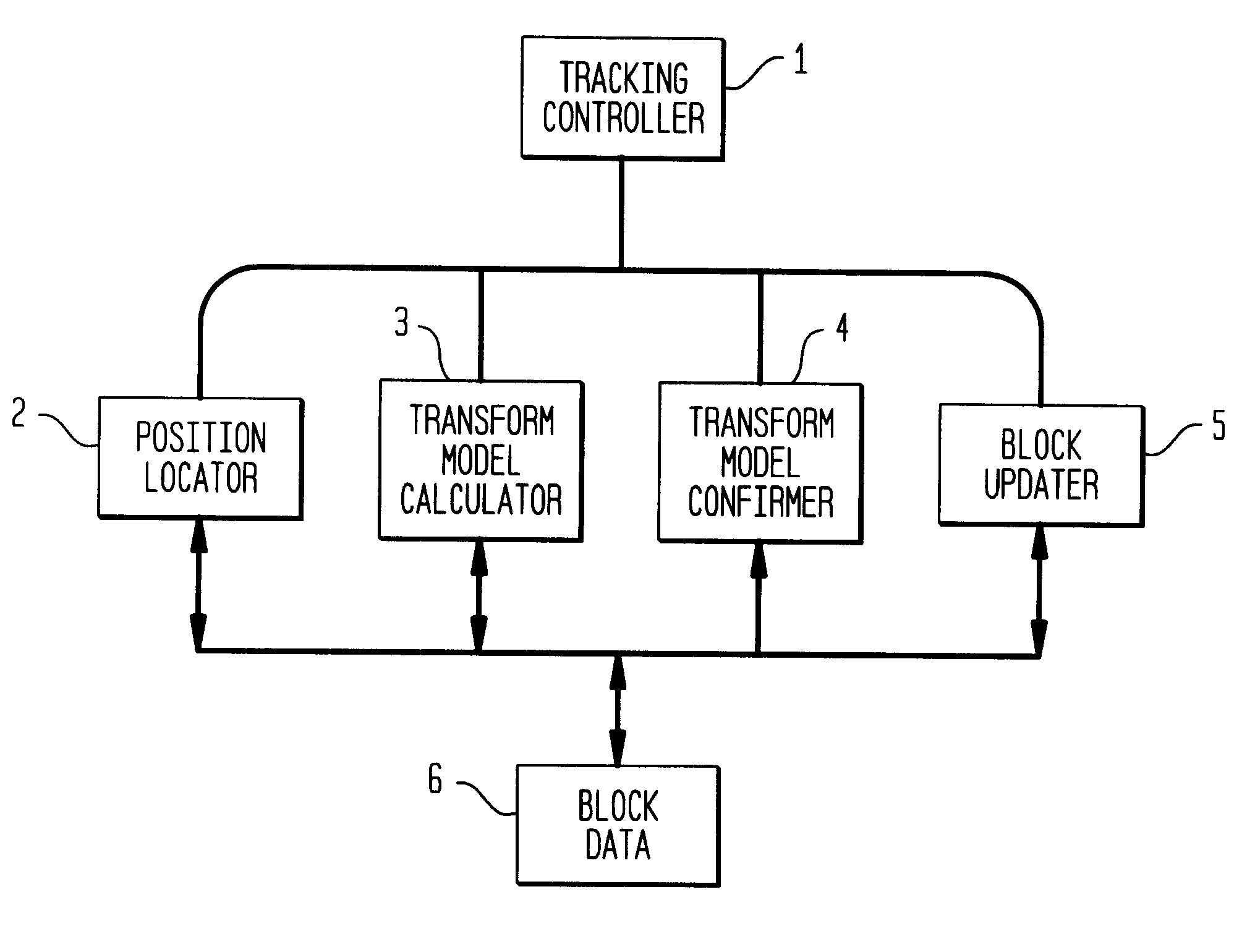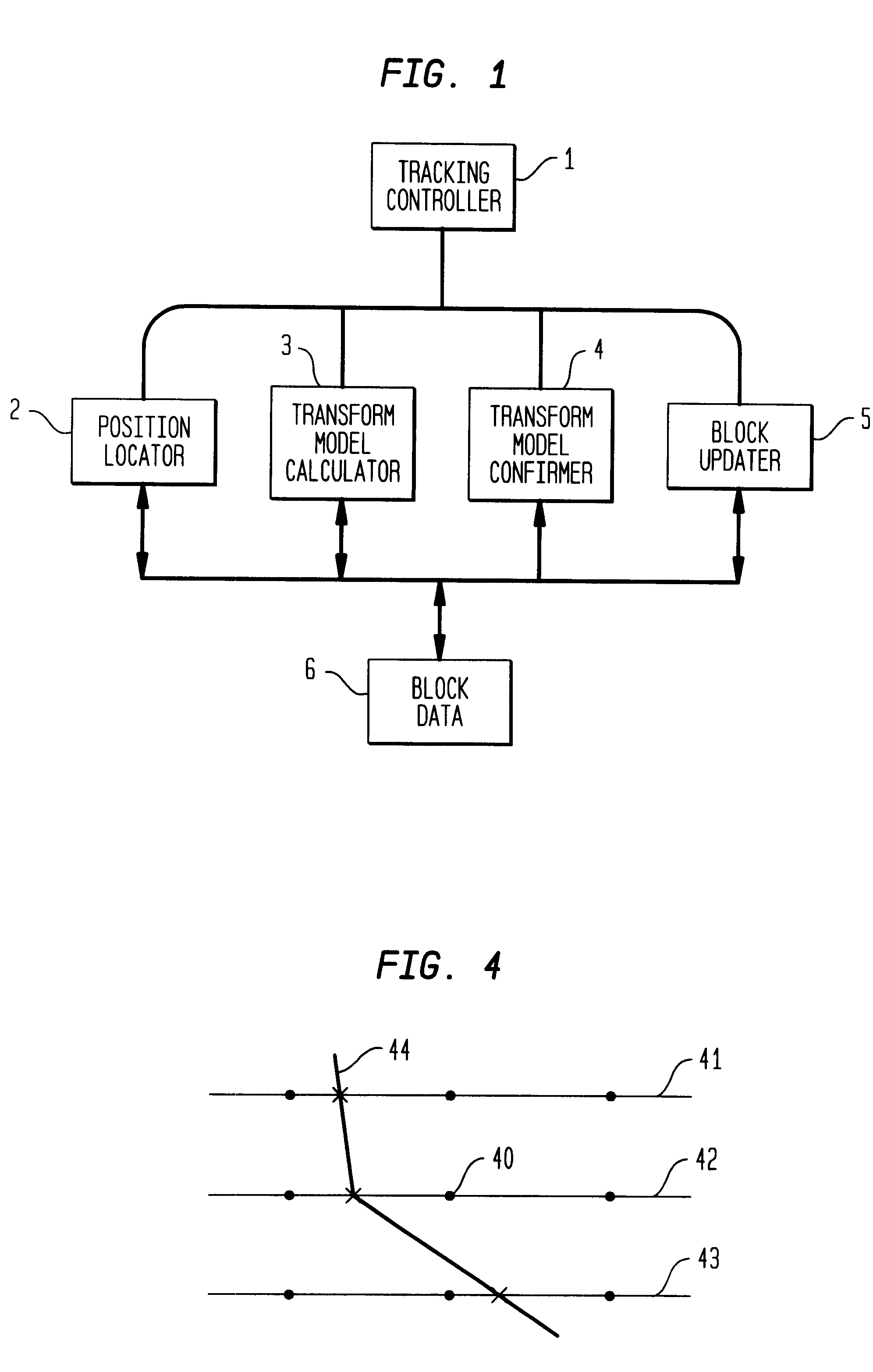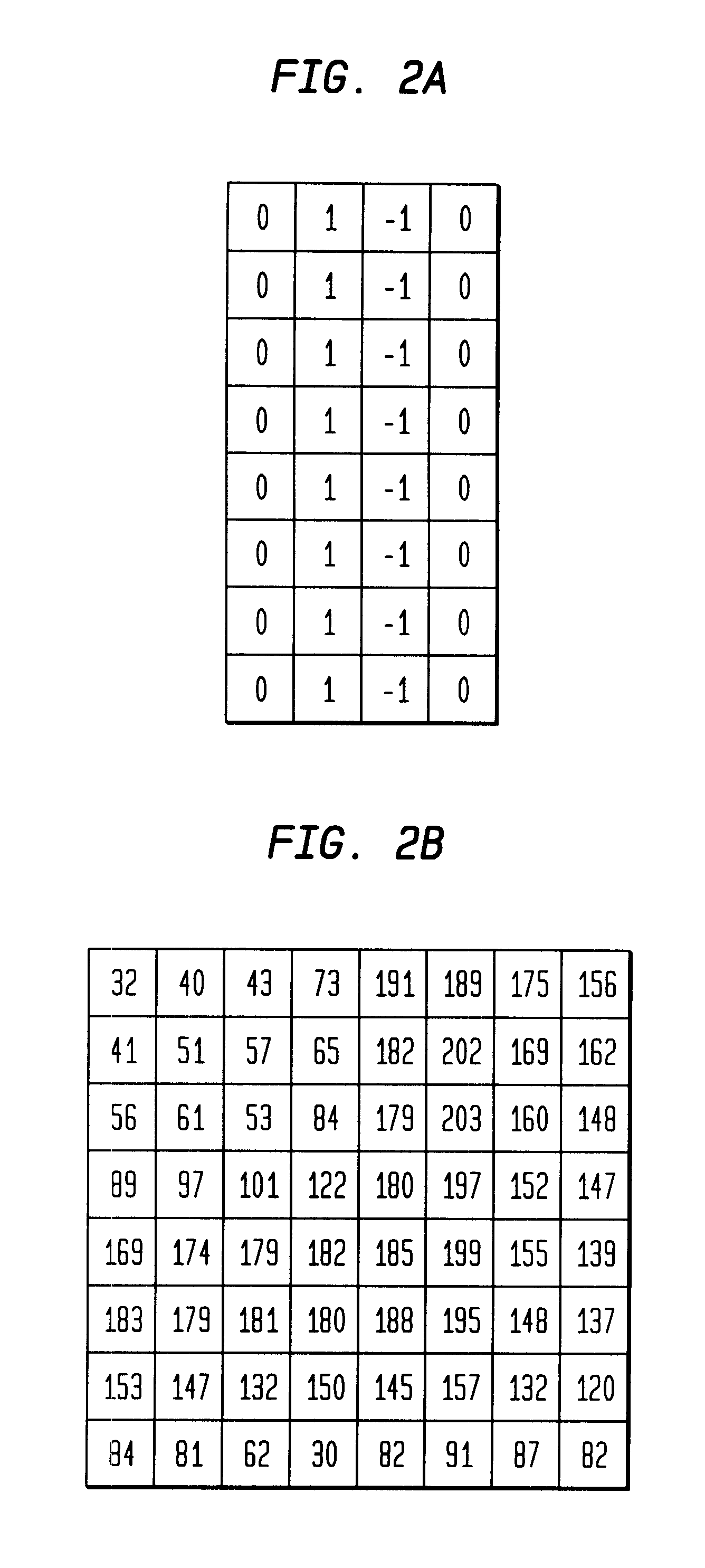Motion tracking using image-texture templates
a motion tracking and image-texture technology, applied in the field of motion tracking using image-texture templates, can solve the problems of limited accuracy of motion estimation, method work well but not under all conditions, and use of block matching technique termed "unnormalized correlation"
- Summary
- Abstract
- Description
- Claims
- Application Information
AI Technical Summary
Problems solved by technology
Method used
Image
Examples
Embodiment Construction
-1 A COMPARISON OF SOME BLOCK MATCHING CRITERIA
The best match is to block A which differs in only one level in one pixel. Block B has a similar shape, but a much higher amplitude, and block C is uniform. Matches are evaluated using the following criteria methodologies:
L1=L1 norm
L2=L2 norm
BA=2.SIGMA.IT / (.SIGMA.I.sup.2 +.SIGMA.T.sup.2).
TI=.SIGMA.IT
ZI=.SIGMA.IZ where Z are the zero mean pixel values of the template as shown below:
-1 0
2 -1
Note that the value of the top right pixel in the image has no effect whatsoever on ZI suggesting that this is a poor matching criteria method since multiplying by zero yields a null value for that pixel location.
The results of the various matching criteria are shown in the following table where an asterisk (*) marks the best match.
It can be seen that the first three criteria methods, L1, L2 and BA, work well. Normalized correlation (NC) has some potential problems, but in real images the chances of finding an image block with ...
PUM
 Login to View More
Login to View More Abstract
Description
Claims
Application Information
 Login to View More
Login to View More - R&D
- Intellectual Property
- Life Sciences
- Materials
- Tech Scout
- Unparalleled Data Quality
- Higher Quality Content
- 60% Fewer Hallucinations
Browse by: Latest US Patents, China's latest patents, Technical Efficacy Thesaurus, Application Domain, Technology Topic, Popular Technical Reports.
© 2025 PatSnap. All rights reserved.Legal|Privacy policy|Modern Slavery Act Transparency Statement|Sitemap|About US| Contact US: help@patsnap.com



